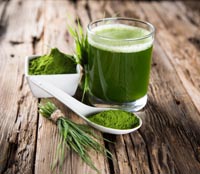Food & You: The Body-Mind Connection
/There's no doubt about it: what we eat, and how much we eat, has a direct impact on our physical health. But did you know that those same choices also influence mood, mental alertness, memory, and emotional wellbeing? Food can act as medicine, have a neutral effect, or it can be a poison to the body and mind.
When food acts as poison, it creates inflammation, which alters the body's balance of nutrients, hormones, and neurotransmitters. This directly affects your body's ability to manage and heal from stress or illness.
While some body-mind effects are due to naturally occurring nutrient content in food, much is due to hidden additives. Below, are four common culprits. If you're experiencing symptoms that interfere with your quality of living, talk with Dr. Bossio about the role these or other foods may play in your health.
Foods that Impact Body-Mind Wellbeing
Caffeine: The most socially accepted psychoactive substance in the world, caffeine is used to boost alertness, enhance performance, and even treat apnea in premature infants. Caffeine is frequently added to other foods, so be mindful of total consumption. Too much caffeine (500-600 mg daily) interferes with sleep quality, which affects energy, concentration, and memory. Caffeine can aggravate other health conditions, cause digestive disturbances, and worsen menstrual symptoms and anxiety.
Food Dye: Those brightly colored, processed and packaged foods come with a rainbow of health risks. Listed on ingredient labels as "Blue 2," or "Citrus Red," food dye has been documented to contain cancer-causing agents (e.g., benzidine). They're also associated with allergic reactions and hyperactivity in children. Dyes are sometimes used to enhance skin color of fruits and veggies. A number of dyes have been banned from use in foods and cosmetics around the world.
Sugars: Increased sugar consumption (as much as 30% over the last three decades for American adults), is linked to decreased intake of essential nutrients and associated with obesity, diabetes, inflammatory disease, joint pain and even schizophrenia. Too much dietary sugar can result in blood sugar fluctuations, causing mood swings, anxiety, irritability, headaches, and increased depression. Sugars that can act as poison include High Fructose Corn Syrup, table sugar, artificial and "natural" sweeteners.
MSG: Monosodium glutamate is a flavor enhancer common in packaged and prepared foods. Although the FDA considers MSG "generally safe," some individuals experience a complex of physical and mental symptoms after eating MSG-containing foods. Symptoms vary but can include headache, sweating, nausea, chest pain, heart palpitations, and overstimulation of the central nervous system which can lead to alterations in sleep, mood, and immunity.
Becoming aware of your food choices, why you make them, and how you feel mentally and physically is an important first step in understanding your personal body-mind food connection. It may be helpful to keep a mind-body food journal to provide a clear picture of how your food choices affect your health.
References
Image Attribution: Eldar Nurkovic/bigstockphoto.com




















